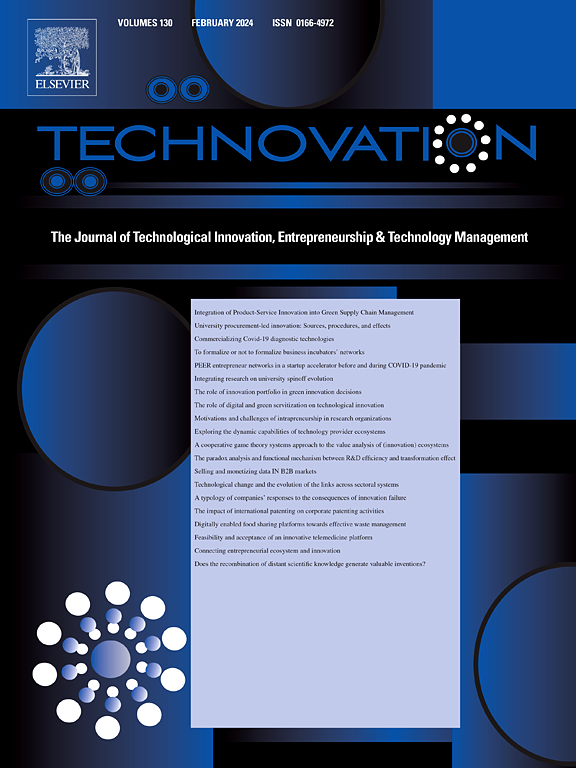When does design thinking promote radical and incremental innovation? The moderating role of the innovation stage
IF 10.9
1区 管理学
Q1 ENGINEERING, INDUSTRIAL
引用次数: 0
Abstract
Although the interest in design thinking within innovation research and practice is growing, there is a lack of a holistic view of the relationship between design thinking and different types of innovation (i.e., radical and incremental innovation). This gap impedes a more thorough and nuanced comprehension of the role that design thinking plays in innovation. To bridge this gap, we investigate the impact of design thinking on both radical and incremental innovation by integrating resource orchestration theory. We further explore whether and how these impacts vary with the innovation stage (ideation stage vs. product development stage). Using survey data from 446 Chinese manufacturing firms, we find that design thinking positively affects both radical and incremental innovation. More interestingly, the innovation stage forms a different contingency factor in which design thinking affects the two types of innovation. The positive relationship between design thinking and incremental innovation is stronger in the ideation stage than in the product development stage. However, the positive relationship between design thinking and radical innovation does not differ significantly between the two stages of innovation. These findings advance the literature on when and how to apply design thinking in different types of innovation, providing practical implications for managers to adjust design thinking implementation strategies on the basis of innovation types and stages.
什么时候设计思维能促进根本性和渐进式创新?创新阶段的调节作用
虽然在创新研究和实践中对设计思维的兴趣正在增长,但缺乏对设计思维与不同类型创新(即激进创新和渐进式创新)之间关系的整体看法。这种差距阻碍了对设计思维在创新中所起作用的更彻底、更细致的理解。为了弥补这一差距,我们通过整合资源编排理论来研究设计思维对激进创新和渐进式创新的影响。我们进一步探讨这些影响是否以及如何随创新阶段(构思阶段与产品开发阶段)而变化。利用对446家中国制造企业的调查数据,我们发现设计思维对突破性创新和渐进式创新都有积极的影响。更有趣的是,创新阶段形成了不同的偶然性因素,设计思维在其中影响着两种类型的创新。设计思维与渐进式创新之间的正相关关系在构思阶段比在产品开发阶段更强。然而,设计思维与突破性创新之间的正相关关系在创新的两个阶段之间没有显著差异。这些研究结果进一步推进了在不同类型的创新中何时以及如何应用设计思维的研究,为管理者根据创新类型和阶段调整设计思维的实施策略提供了实践启示。
本文章由计算机程序翻译,如有差异,请以英文原文为准。
求助全文
约1分钟内获得全文
求助全文
来源期刊

Technovation
管理科学-工程:工业
CiteScore
15.10
自引率
11.20%
发文量
208
审稿时长
91 days
期刊介绍:
The interdisciplinary journal Technovation covers various aspects of technological innovation, exploring processes, products, and social impacts. It examines innovation in both process and product realms, including social innovations like regulatory frameworks and non-economic benefits. Topics range from emerging trends and capital for development to managing technology-intensive ventures and innovation in organizations of different sizes. It also discusses organizational structures, investment strategies for science and technology enterprises, and the roles of technological innovators. Additionally, it addresses technology transfer between developing countries and innovation across enterprise, political, and economic systems.
 求助内容:
求助内容: 应助结果提醒方式:
应助结果提醒方式:


